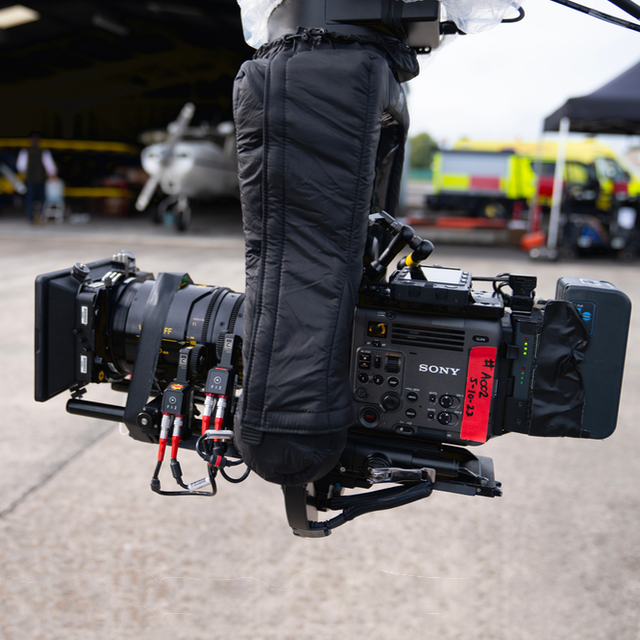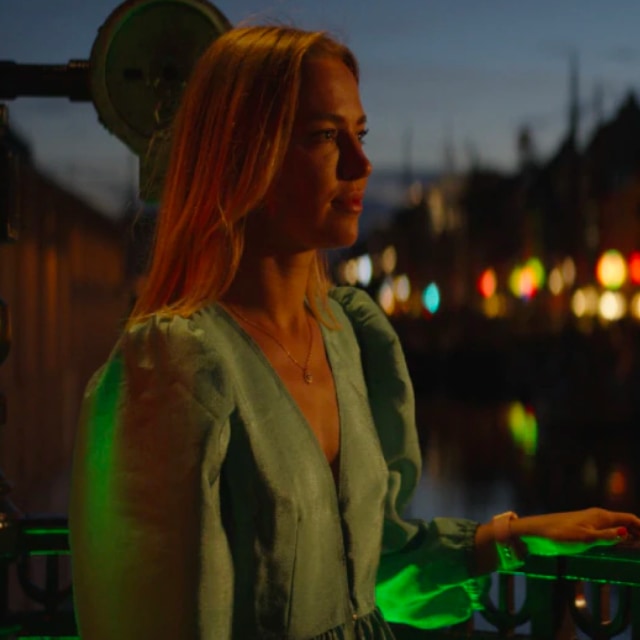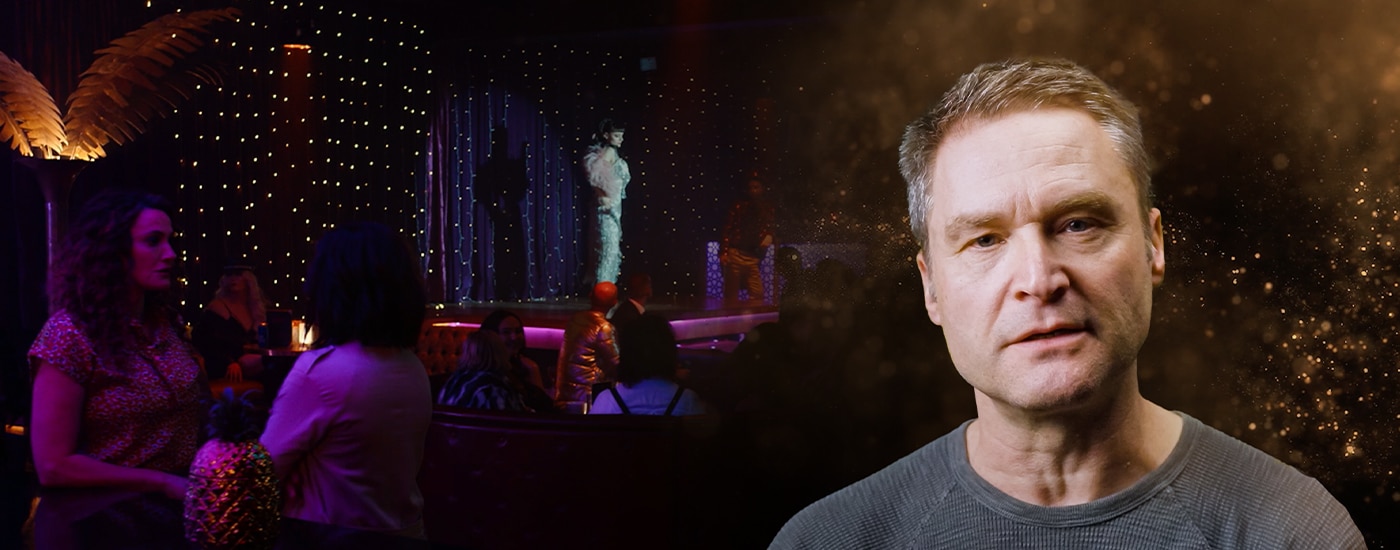
Scene Deconstruction with Oliver Curtis BSC
Introduction
BAFTA-nominated Oliver Curtis is one of the youngest ever cinematographers to be invited to become a member of the British Society of Cinematographers. He has worked on many high-profile feature films including Death at a Funeral as well as hit streaming series such as Lockwood and Co.
In this interview he talks to us about his work on the Netflix series Stay Close, a thriller that tells the story of suburban woman who’s past comes back to haunt her.
Scene Deconstruction: Key Insights
- Changing the pace of the cutting in a scene can be used to build a sense of tension or to add breathing space before a dramatic sequence. This can be enhanced by changing between shorter dynamic shots with lots of camera movement and longer, lingering shots with less camera movement.
- Dramatic and extreme camera angles such as very low shots or tilted dutch shots are often used in thrillers to add a sense of drama.
Nightclub Scene
In Episode 6 of the series the character Ray, played by actor Richard Armitage, is at a stag do stalking the groom to be. The scene takes place in a dimly lit nightclub which poses some significant challenges with highly saturated colours, low light levels and a great array of skin tones. Because of this Oliver felt that it was really important to consider how the details in the scene would be recorded. He felt it was important to try to get a clean light in amongst all the different colours so that the viewers eye can grab on to the details in the shot. He says that this is one of the areas where VENICE is so good because it can differentiate between really subtle differences in skin tones, especially when you are using highly saturated colours.
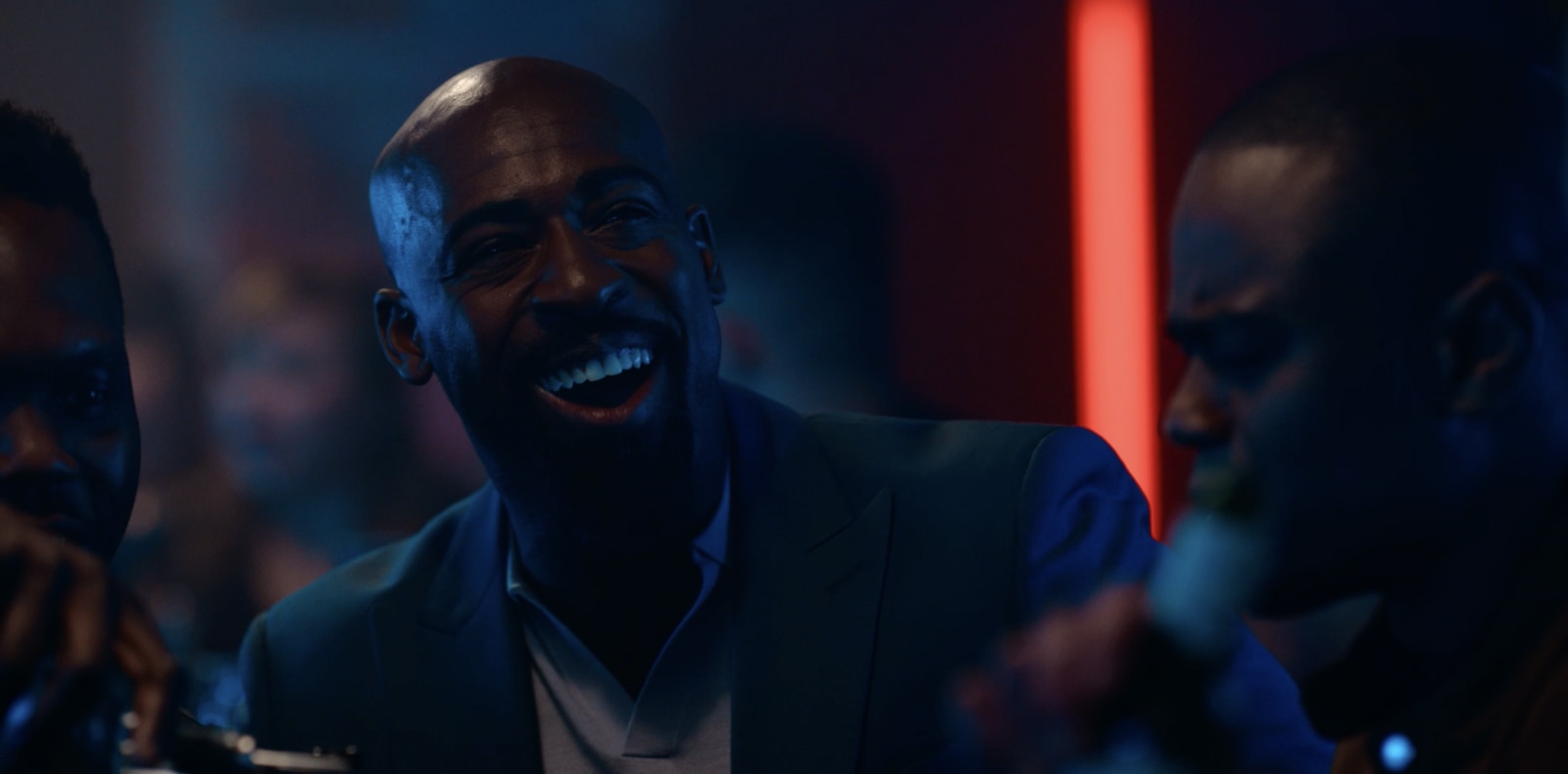
The location had large overhead lights and Oliver swapped the bulbs for tungsten ones so that the light had a clean, warm character at about 2300 to 3000 kelvin. This light could cut through the extreme saturation from the other highly coloured lights of the nightclub.

In a scene like this Oliver likes to generally have one or two light sources constantly on to give a consistent base exposure and then add any chased light sources on top of that. This gives a rhythm to the coloured light movement while the consistent lights cut through the coloured lights.
The colour in the scene was created mostly with Astera tubes and these can be seen in many of the shots. The tubes were placed within the shots either vertically or on shelves on the walls. Oliver worked with the lighting desk operator to setup certain chases to emulate the nightclub lighting.
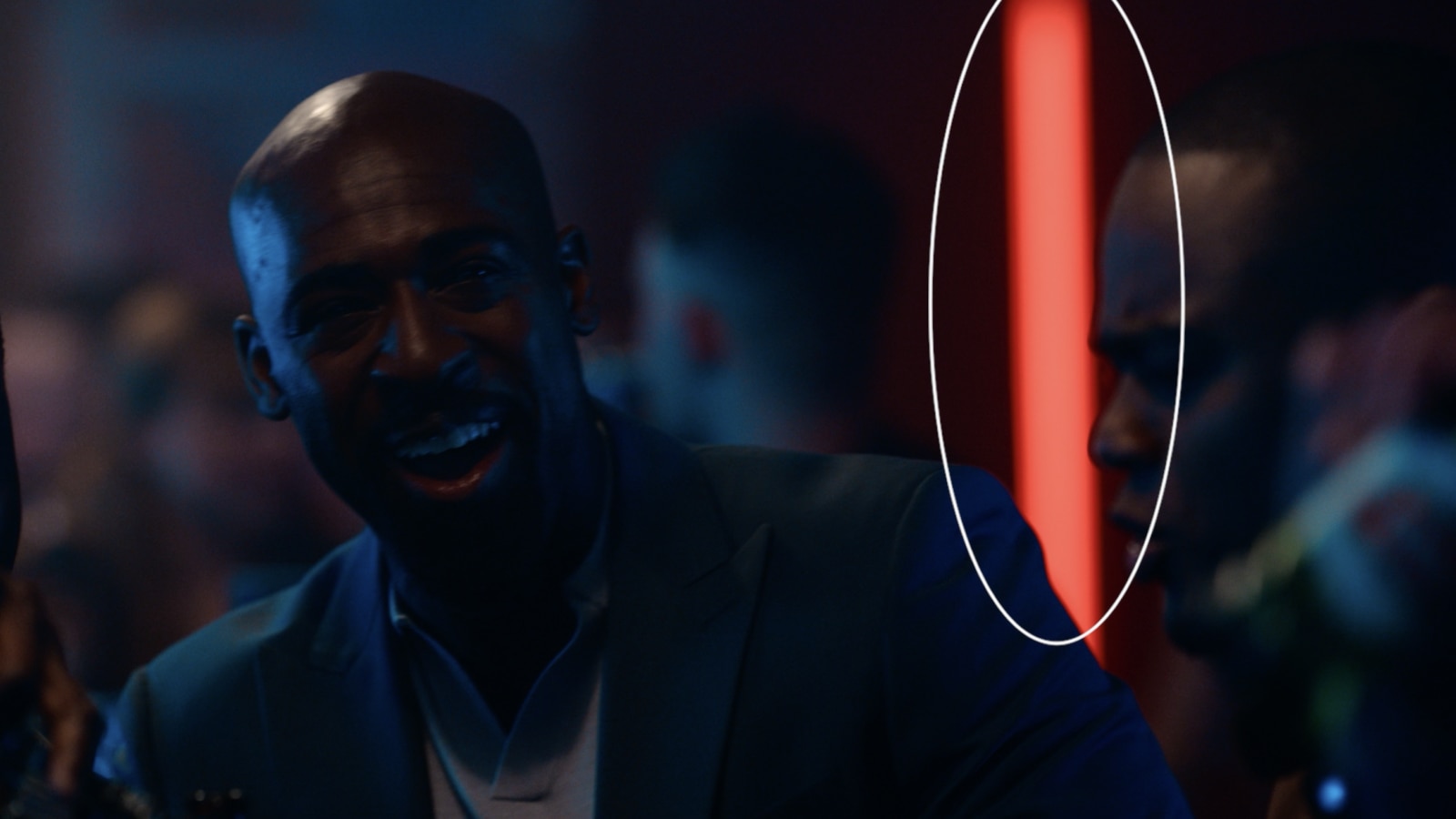
He chose to leave the lights in shots as the lights didn’t look out of place. They also acted as practical lights giving good motivation for the strongly coloured light falling on the faces of the cast. In addition, this made it much easier to shoot with multiple cameras, to cross shooting and allowed the crew to work very quickly.
The Wake Scene
What’s so great about the VENICE [is]… working at very low light levels it manages to reproduce rich saturated colours in a really true way.
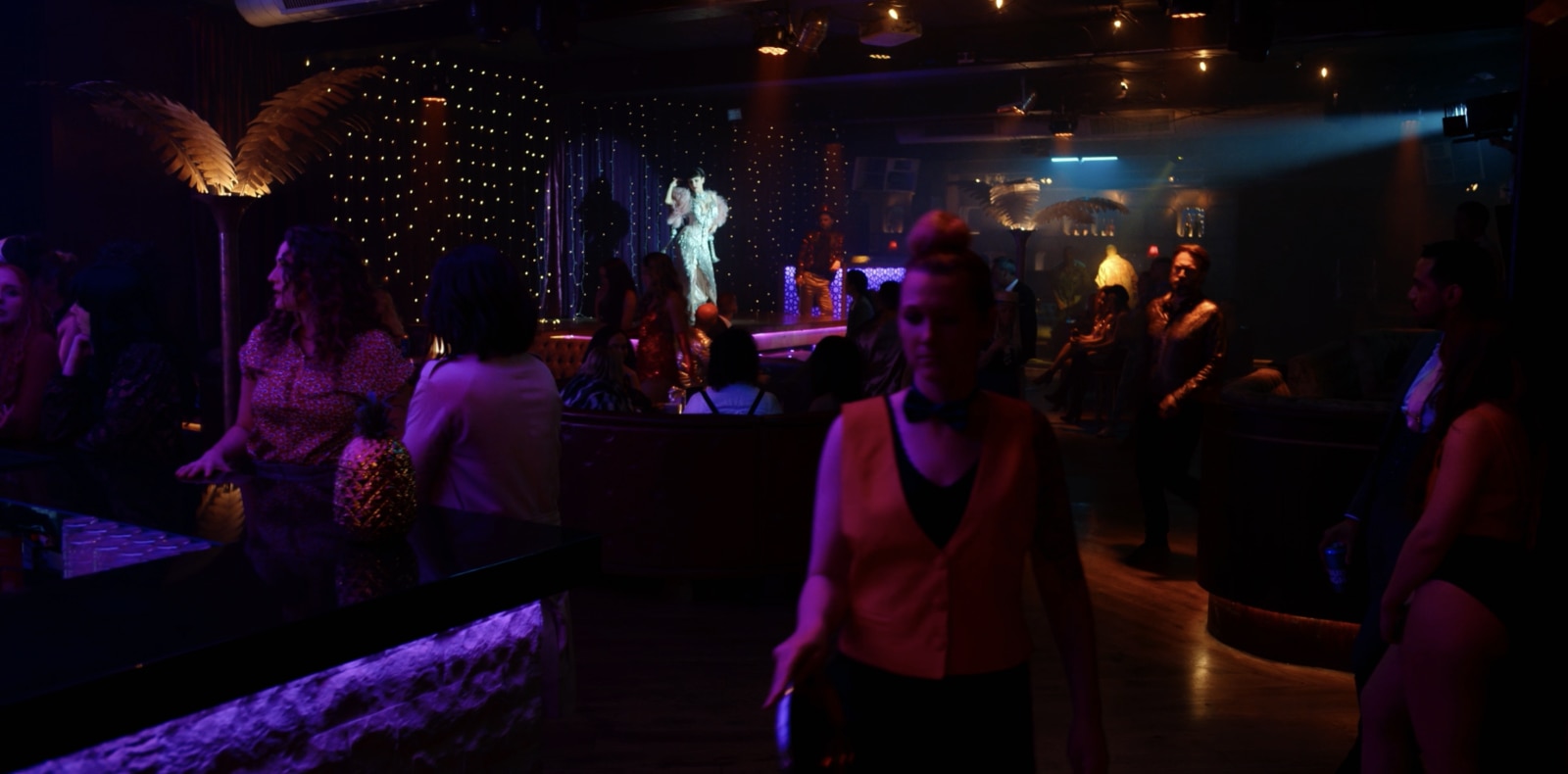
In this scene the character Cush, played by Megan Pierce, returns to the Vipers night club for a wake. The location had a large number of existing practical light sources that Oliver just had to roll with. These lights included strong purples from above as well as beneath the bar.
Oliver felt it was important that these strong colours were captured accurately but also that they didn’t dominate the skin tones of the characters around the bar. There were also a number of Par Can lights, an LED star curtain plus many coloured fluorescent tubes. So, they had to work with a great deal of colour contrast within the scene.


To cut through all of this Oliver decided to add a sharp, clean and crisp follow spotlight to light the speeches that take place on the club’s stage. This allowed him to get good colour contrast throughout the scene and allowed them to cut between the more conventional look of the speeches and the more seedy, coloured nightclub look.
Oliver had to adjust some of the existing practical lights, taking the saturation out of some and adding brightness to others to help in the otherwise very dark location. In addition, they added extra practical lights along with smaller light sources such as uplighters to lift areas of the set that would otherwise be in complete darkness. To add volume, a small amount of haze was added to the room so that the shaft of light from the follow spot became the dominant light source cutting through all the other colours.

For the shot where the character Lorraine steps off the stage, out of the clean spotlight and approaches the character Broome, Oliver chose to light their faces with a sympathetic, soft and warm light source from the floor. He did this to enhance the more intimate nature of the moment, taking the characters temporarily out of the drama of the nightclub.

Oliver believes that VENICE works really well in low light situations like this as it manages to reproduce the highly saturated colours in a true to life way. In addition, he finds that the dual ISO function gives you the freedom to work at very low light levels making the use of VENICE for scenes like this “a bit of a no brainer really”.
The Escape Scene
In this sequence the character Megan has tracked down the country chalet where her kidnapped daughter, Kayleigh is being held. It takes place in and around a dilapidated wooden building in a forest. In one shot we see Megan cutting through a rope that is securing a closed door.
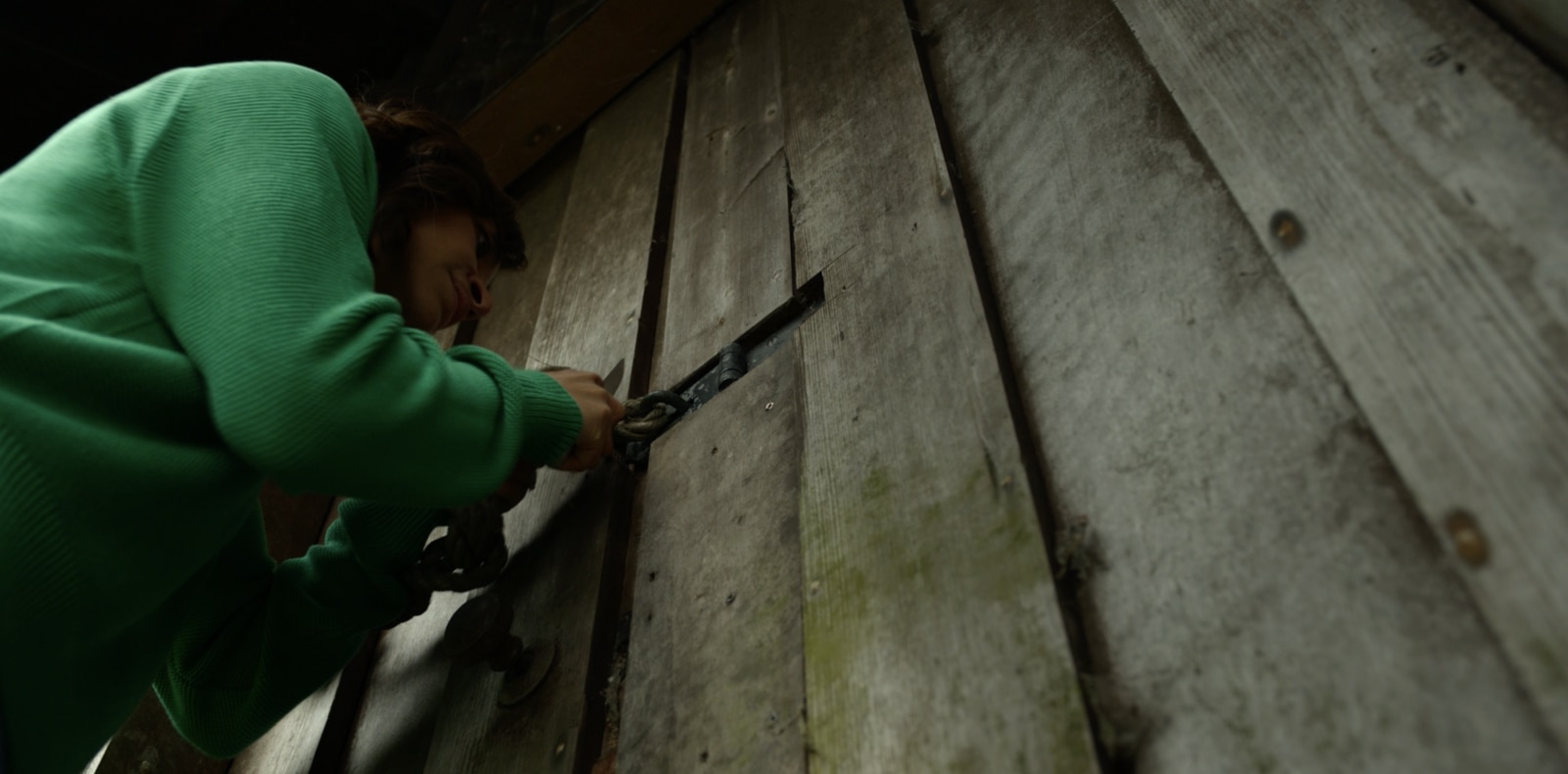
Oliver used the classic compositional device of placing the camera at a very low and extreme angle and shooting upwards at Megan as she tries to cut the rope to the door to add tension. He says that off axis angles and extreme angles like this are commonly used in thrillers to add drama and, in this case, it allowed them to include both the cutting action of the knife on the rope as well as Megan’s facial expressions.
As the door opens and Kayleigh runs out, the sequence cuts to a drone shot where the drone comes over the top of the chalet and we see Megan and her daughter making their escape as the drone camera follows them down a narrow lane.
A big concern for the drone shot was safety as the drone would be very close to the actors. However, Oliver felt that the drone shot added a real sense of energy and excitement at the start of what would eventually turn into a longer chase sequence.
For the interior shots in the Chalet, Oliver placed warmed HMI lights outside its windows, aimed through the net curtains. Inside the room he used negative fill to increase the contrast and then added a small amount of haze to add some atmosphere. To control the contrast between the intense light coming through the windows and curtains he placed an additional light with a softbox in the ceiling space to control the overall contrast. This ensured that the windows and net curtains didn’t blow out too much.
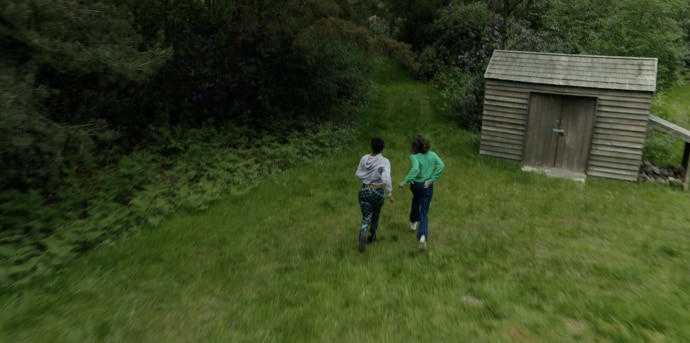
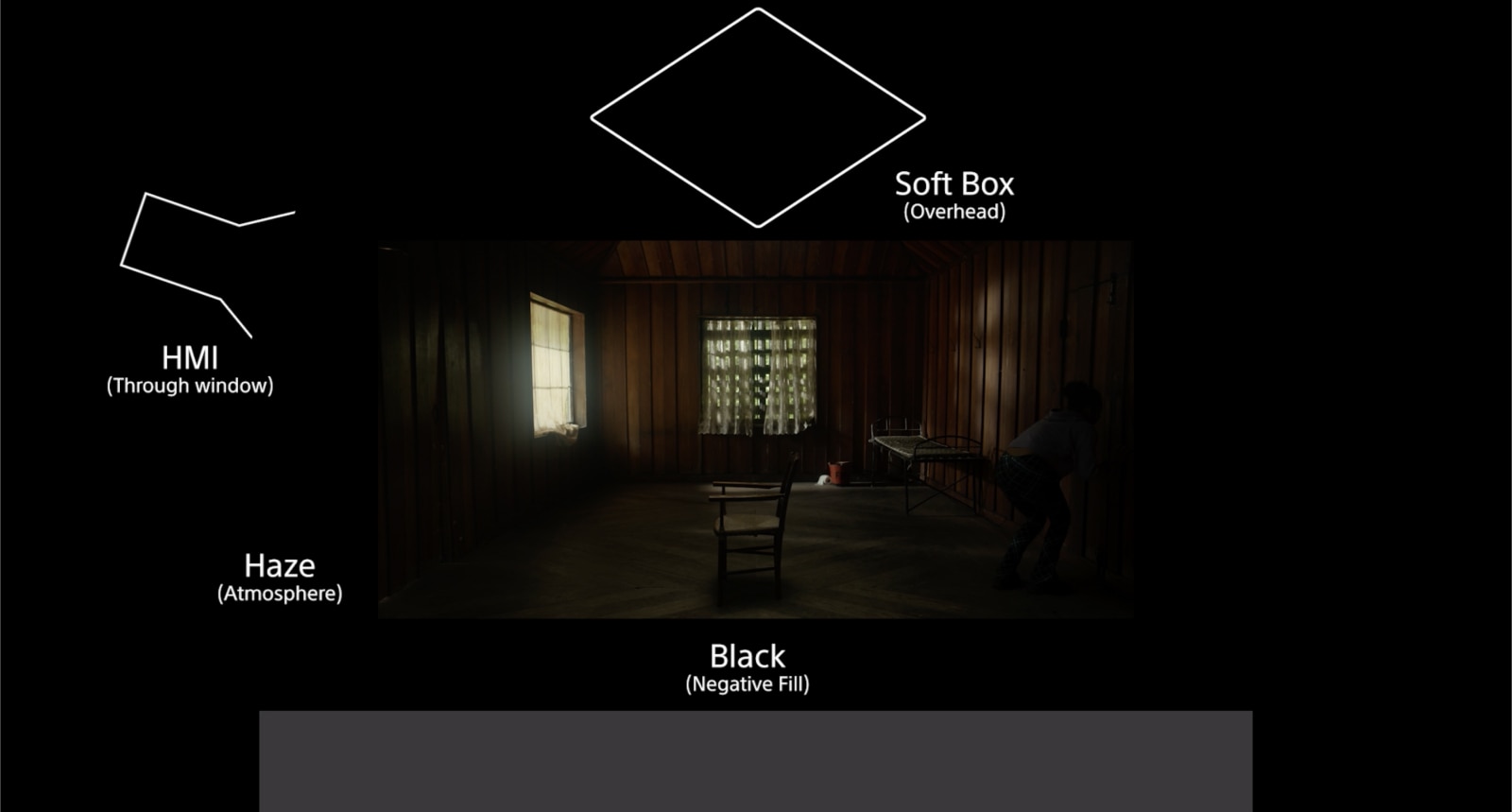
In another shot we see Megan’s daughter trying to peer outside through cracks in the door. The cracks in the door were very small and didn’t actually let much light through. So, for this shot Oliver added a warm bounced light source just below the camera lens to put a small amount of reflected light onto the skin of her face.
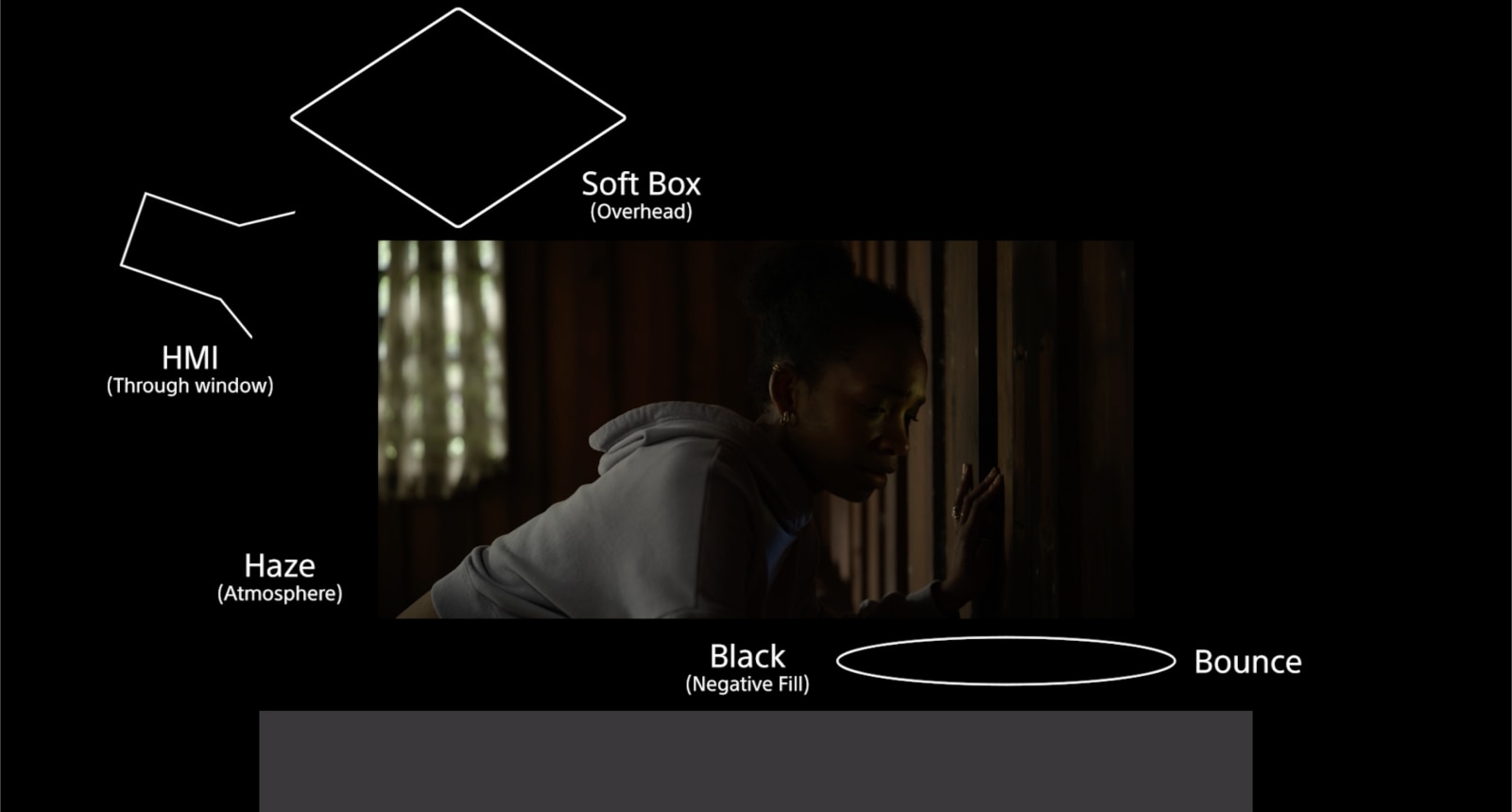
Once Megan and Kayleigh have made their escape we cut to another view of the chalet where we see their captor Ken as he realises that they have gone. To help build a sense of tension Oliver tells us of how less can often be more and the importance of pace. For the shots of Ken entering the cabin and finding it empty the camera was kept still and the shot held for longer.

Then we cut to a wide exterior shot of the cabin where the camera very gently tracks back while the sound is used to punctuate Ken’s anger at their escape. The pace of these shots is quite different to those before and after. This helps build the tension in the sequence before the scene transitions to a much faster cutting pace during the chase that follows. That change of pace is a useful and important story telling tool.



